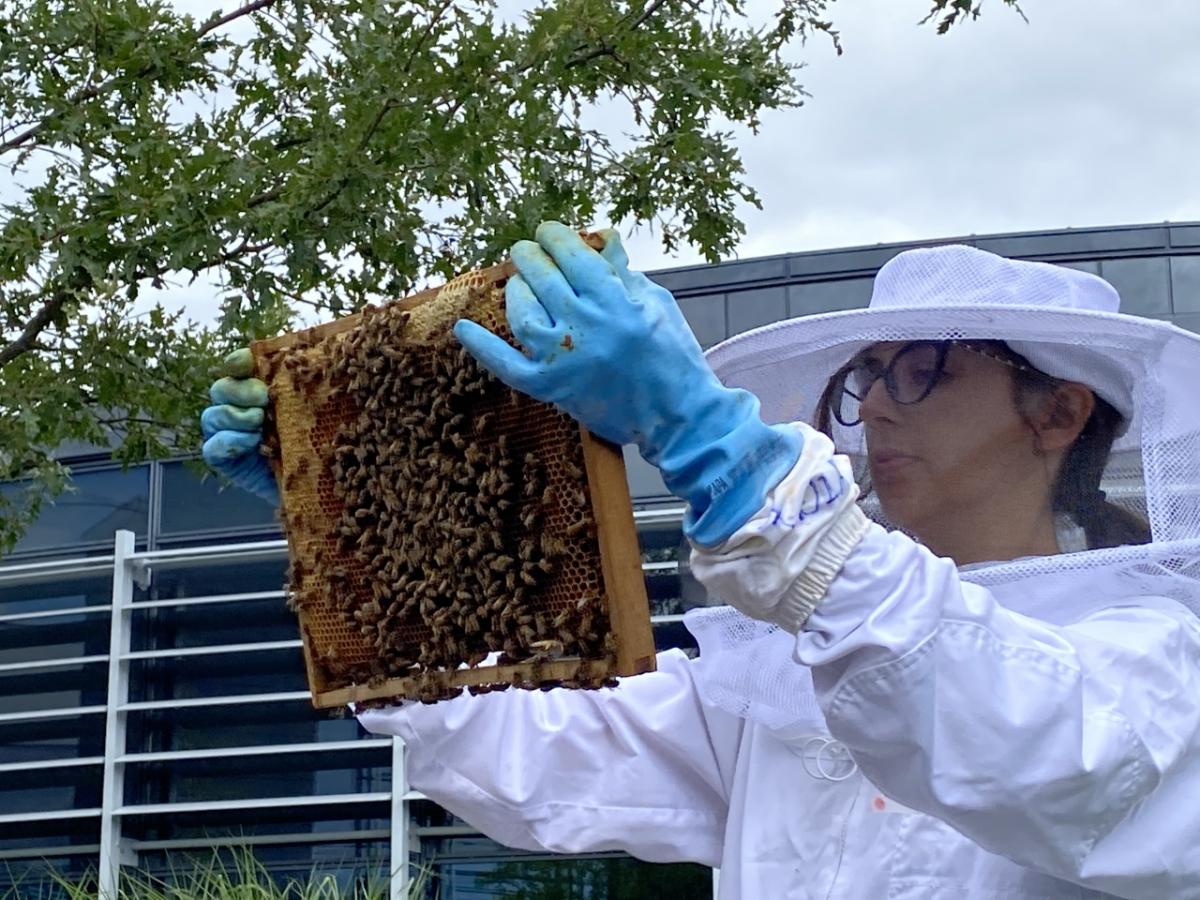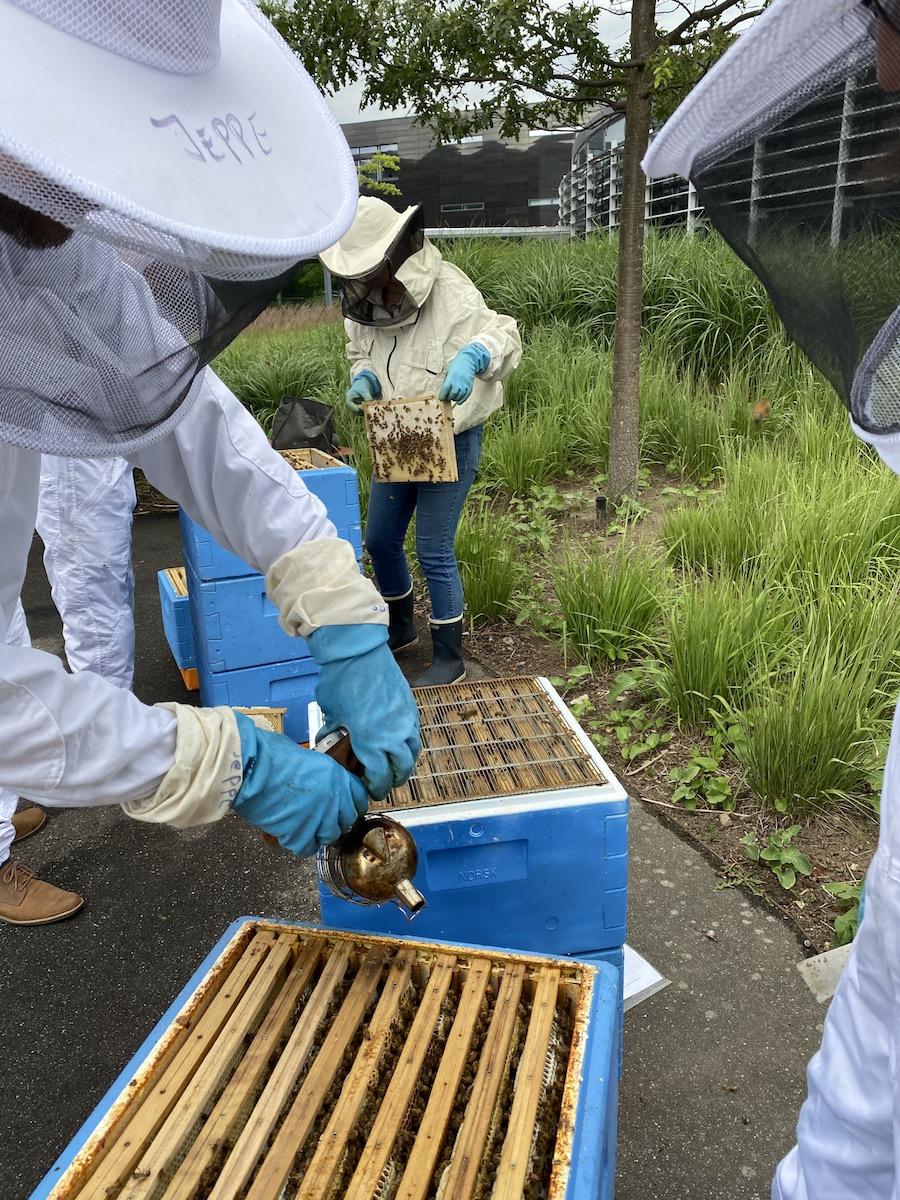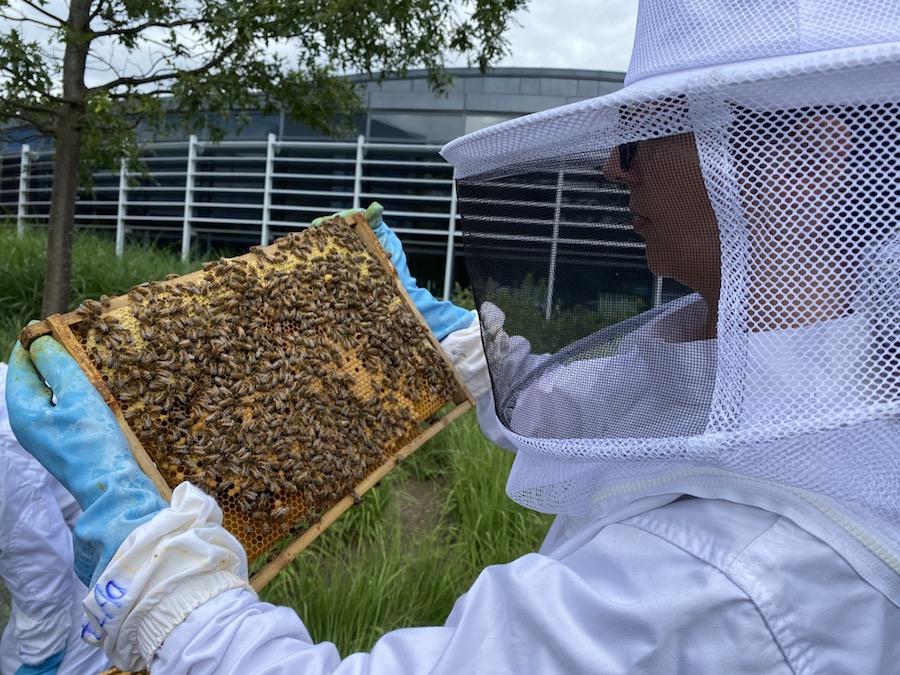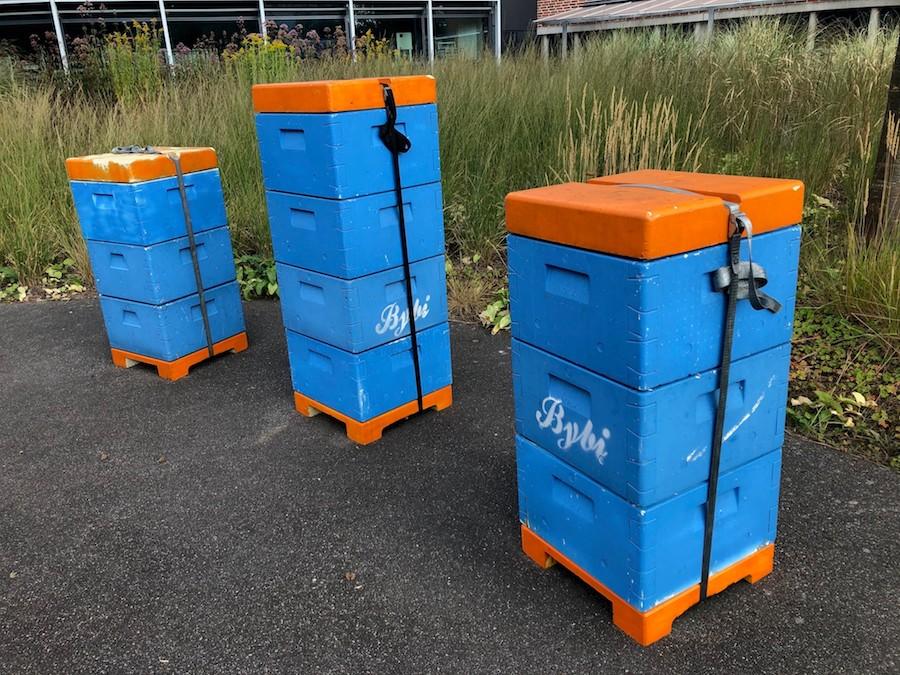You Better Bee-lieve It
An employee-led beekeeping club is bringing good energy and a love for nature to renewable energy company Ørsted.
COPENHAGEN, Denmark, October 8, 2020 /3BL Media/ - A protesting hum greets members of the Ørsted Beekeeping Club every Tuesday after work. Covered head to toe in beekeeper suits, including hats and face nets, they pad softly between the beehives that stand on a patch of tall grass and flowers amidst Ørsted’s modernist office buildings, north of Copenhagen.
The hives consist of up to five large blue plastic boxes, each holding 10-11 wooden frames encrusted with wax and honey. The bees circle hypnotically and cling together as the budding beekeepers gently brush them off to inspect the frames.
“The first few times you’re very alert and learn not to make abrupt movements. You douse them with a little smoke to calm them, so you can remove each frame to check whether the bees are healthy or behaving oddly,” says Christel Weber Kristensen Gouas, a language consultant at Ørsted. “I’m just relieved I have the right outfit to do this work,” she adds.
Unique universe
With help from a professional beekeeper, members of the Ørsted Beekeeping Club learn how to care for the hives and their buzzing occupants, gather honey, and then sling, filter, and bottle it. They inspect the bees, eggs and larvae, treat for bee diseases, and check if the hives are invaded by other insects. They locate the queen and assess her well-being, check the maturity of the honey in the frames, and gauge whether it is ripe and ready for harvest. In short, they get a unique, close-up view of the bee universe.
“Bees can appear chaotic. Then you find out they can fly up to two kilometers [~1.25 miles] away from their hives to gather pollen and nectar and return to the hive and communicate the colour, fragrance, direction, and distance of those flowers by dancing in unique figure-eight patterns,” says Jeppe Johansen, a wind power engineer who participated in establishing the beekeeping club. “It’s amazing how complex the organisation of a beehive is and to realize how bees communicate between each other – and also very fascinating from an engineering point of view,” he adds.
Established in 2018, the club is a meeting place for employees who enjoy nature, honey, and bees. It aims to increase awareness about bees and their role in the pollination of flowers and plants. The bees are tended April through September, when they go gather pollen and nectar; and fed sugar syrup when they hibernate in winter. This year, Ørsted’s hives produced 88kg [~194 pounds] of honey, which are being sold to employees for about USD 4-5 per jar to help cover costs of the Club’s beekeeping equipment.
Fundamental connection
Ørsted’s hives were set up by ByBi, a Copenhagen-based social enterprise with a passion for how bees and honey can bring together local communities and inspire a more sustainable relationship with nature. It continues to support the Ørsted Beekeeping Club in tending the company’s hives.
Oliver Maxwell, founder of ByBi, says that beekeeping inspires positivity and a “delicious sensuality around taste, smell, and colour, which I think is enormously healthy for humans.” He believes people are attracted to beekeeping because of its “fundamental connection with the living world.”
It’s a sentiment echoed by employees of Ørsted, which is among the world’s biggest renewable energy companies and ranked as the world’s most sustainable company. As Christel puts it: “Taking care of the ecosystem is valuable for me and beekeeping is just a small act that helps preserve the planet Earth, our shared home.”
Box: The buzz about bees
- A beehive houses a bee family or colony, including only one queen bee, hundreds of drones, thousands of worker bees, and eggs and larvae.
- Drones bees mate with a queen bee from a family other than their own and die after mating. A queen mates with several drones and lays thousands of eggs, one in each cell of the hive.
- A bee family produces 8kg [~17.6 pounds] of honey for every 1kg [~2.2 pounds] harvested. The bees eat the rest!
Box: About Ørsted
The Ørsted vision is a world that runs entirely on green energy. The company develops, constructs and operates offshore and onshore wind farms, solar farms, energy storage facilities, and bioenergy plants, and provides energy products to its customers. The Group's revenue was EUR 9.1 billion in 2019. Ørsted will be carbon neutral by 2025 and targets net-zero emissions across the entire carbon footprint by 2040. The company generated 86% of its energy from renewable sources, and had reduced carbon emissions by 86%, in 2019. Ørsted ranks #1 in Corporate Knights' 2020 Global 100 index of most sustainable corporations and is recognised on CDP’s Climate change A List as a global leader in climate action.
Contact:
Devapriyo Das, Senior Communication Advisor, Ørsted
dedas@orsted.dk
+45 99 55 46 14






